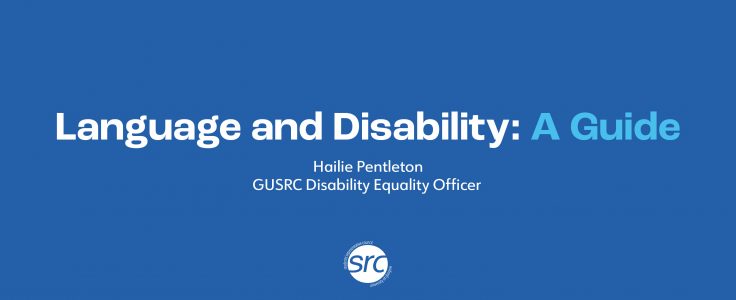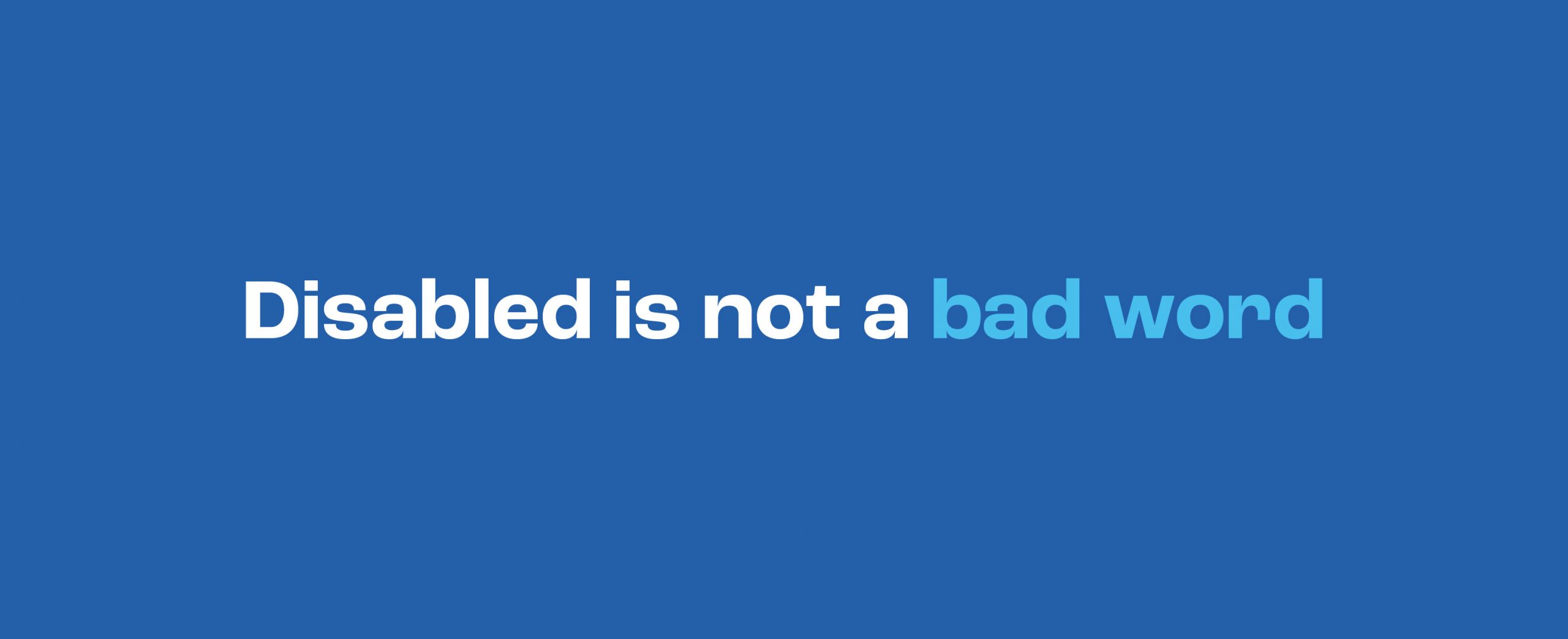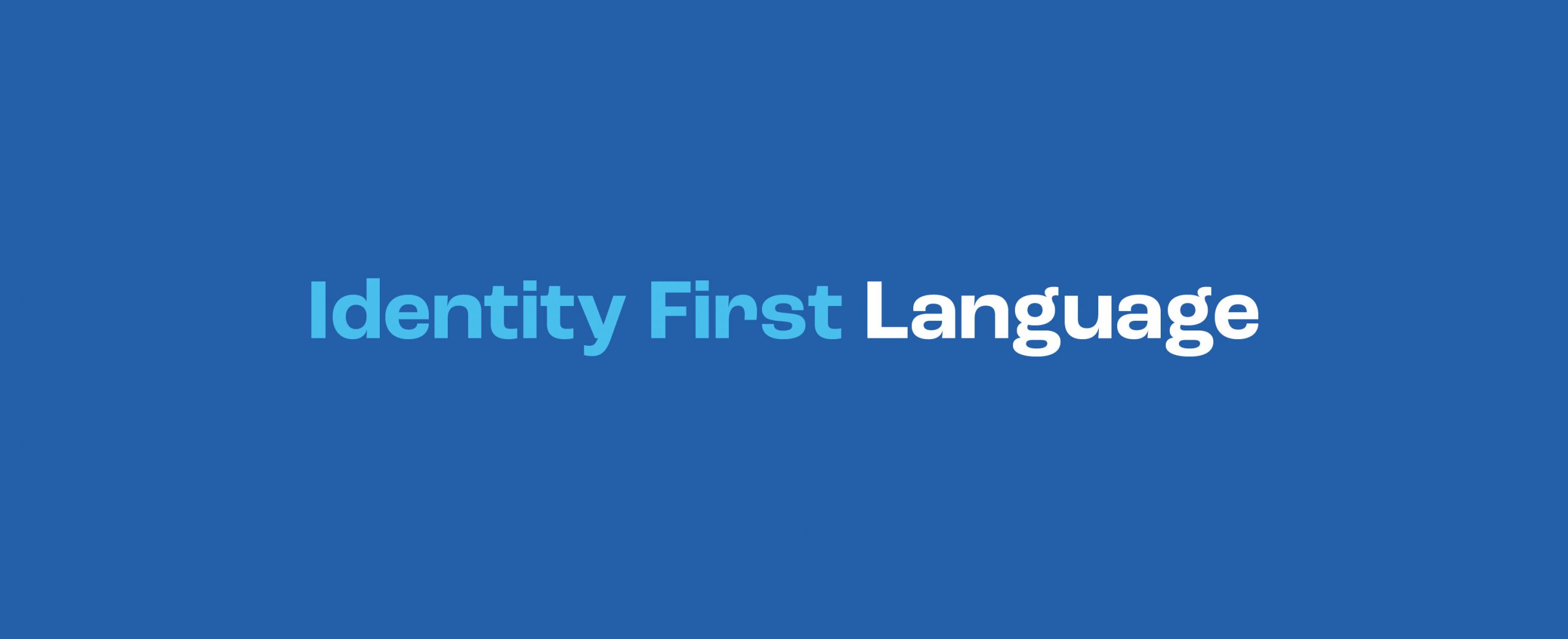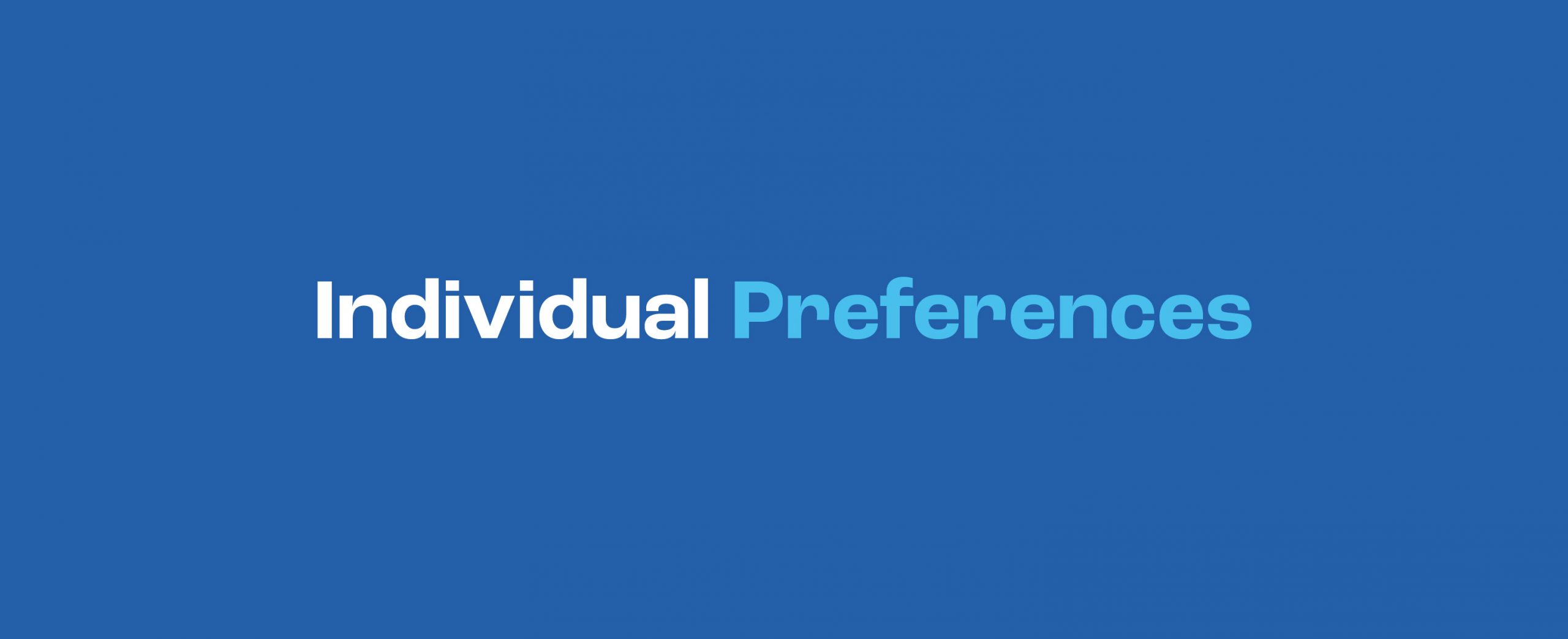Language and Disability: A Guide
Sometimes people worry about how to talk about disability without using ignorant or insensitive language. This guide contains the language generally preferred by disabled people and provides definitions of commonly used phrases such as ‘identity-first’ and ‘person-first’ language.

This resource was first created by Hailie Pentleton, the GUSRC Disability Equality Officer 20/21, and is intended for use by both staff and students. For further clarification, contact disability-officer@src.gla.ac.uk.
Disabled is not a bad word

The word ‘disabled’ is not a bad word. It is not a slur or an insult, and should not be used as one. Just like ‘Scottish’ or ‘pink’, ‘disabled’ is an adjective. Avoidance of this word often perpetuates negative stereotypes around what it means to be disabled; being disabled is not inherently bad, nor is the word itself.
Being disabled does mean that a person may perform certain tasks differently, but it is not the opposite of ability. Avoid made-up terms or euphemisms such as ‘differently-abled’ ‘diversability’ or ‘ability not disability’. These terms are often created by non-disabled people as a means of softening language around disability. Recognising that a person is disabled does not negate their abilities.
Offensive and outdated terms such as ‘handicapped’ ‘special needs’ or ‘invalid’ should also be avoided. An extensive list of terms to avoid can be found here: https://www.gov.uk/government/publications/inclusive-communication/inclusive-language-words-to-use-and-avoid-when-writing-about-disability
It is important to note that some disabled people find it empowering to reclaim words that have been or are used negatively towards people, such as the word ‘cripple’, similarly to the way that the word ‘queer’ has been reclaimed by some members of the LGBTQ+ community. The use of ‘some’ is important here; not all disabled people are comfortable reclaiming slurs. Non-disabled people should not use these words.
Identity First Language

| Identity-First | Person-First |
| Example: an autistic person
Positions disability as an identity category. Emphasises that a person’s condition is significant to the way they interact with the world, and to their life more generally. |
Example: a person with anxiety
Positions disability as something separate from the individual. Asserts what a person ‘has’ rather than what they ‘are’. |
It is generally preferred that you use identity-first language when talking about disability: ‘a disabled person’ or ‘disabled people’ rather than ‘the disabled’ or a ‘person with a disability’. By using identity-first language, we recognise that being disabled is definitive of a person’s experiences and interactions with the world. Identity-first language embraces disability as part of a person’s identity. Person-first language positions disability as something that can be separated from a person; generally, this is not the case. People are not their disabilities, but their experiences are shaped by them.
It is less clear cut what language we should use when discussing particular disabilities, especially in the case of mental health conditions. A ‘person with anxiety’ is preferred over an ‘anxious person’. When discussing autism, it is overwhelmingly preferred that we say ‘autistic people’ rather than ‘people with autism’ or ‘people on the spectrum’.
Individual preferences should always be taken into account. However, when talking about disability generally it is encouraged that you use identity-first language.
Individual Preferences

Language choices may differ between groups and individuals, and individuals within groups. It is important that these preferences are respected. Disabled people choose the language they prefer to use when communicating about their conditions. For many, this is an empowering exercise of autonomy. Even if it comes with good intentions, non-disabled people should never correct disabled people on the language they use to discuss their condition(s) or impairment(s).
Positive Language

It is important to always use positive language when talking about disability. This generally means avoiding medical terminology that categorises disabled people as existing outside of what is normal; avoid words like ‘symptoms’ ‘deficits’ or saying that someone ‘suffers from [x]’. Instead, use positive language like ‘traits’ or ‘condition’ or discuss the ‘challenges’ that can arise for disabled people existing in a world primarily designed by and for non-disabled people.
Many disabled people do not consider themselves to be ‘suffering’ from their disability, and it is important not to make such an assumption. For example, when discussing ‘wheelchair-users’ we should never say ‘wheelchair-bound’ or that someone is ‘confined’ to their wheelchair. This language suggests that there is something inherently negative about using a wheelchair, when many wheelchair users view their wheelchair as a positive that allows them independence.
Tips on Behaviour

- Treat disabled people the same way you would treat non-disabled people; with respect and compassion.
- Talk directly to a disabled person, even if they are accompanied by an interpreter, carer, or companion.
- Don’t talk down to or patronise disabled people; use your normal tone of voice. Avoid shouting, crouching down to a person’s height level, or speaking slowly (unless it is specifically requested that you do so).
- Don’t ask a disabled person what is ‘wrong with’ them or ‘what happened’ to them. It is up to an individual whether they wish to disclose details around their disability. Your curiosity should not trump another person’s comfort.